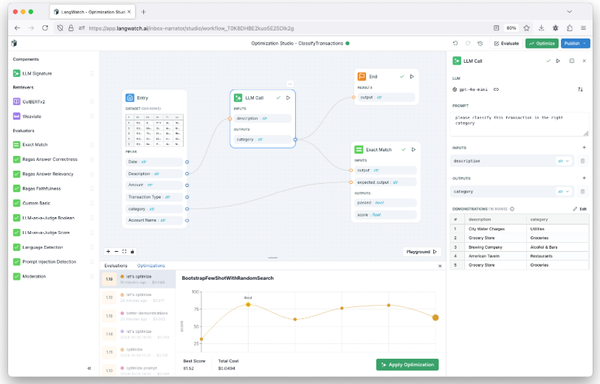Weather Intelligence at Your Fingertips: Integrate Weather API for Data-driven Decisions
Table of Content
These days, businesses are continuously looking for methods to get a competitive edge in a data-driven world by utilizing insightful data. Weather data is one such important source of information. Some industries that depend heavily on weather are agriculture, transportation, retail, and tourism. Businesses in these industries can use historical and real-time weather data to help with decision-making by integrating Weather API (Application Programming Interface) into their apps.
Let’s delve deeper into how you can incorporate the Weather API into applications and the benefits it offers for making data-driven decisions.
1- Understanding Weather API:
It's significant to understand Weather API before diving into the integration process. An API serves as a link between several software programs, enabling easy data sharing and communication. Weather API offers detailed data on temperature, humidity, wind speed, precipitation, and other factors. Businesses can access this enormous repository of weather data and incorporate it into their apps by using a good Weather API.
2- Choosing the Correct Weather API:
The first step in integrating the Weather API is choosing the appropriate provider that meets your specific needs. Think about things like data coverage, accuracy, integration ease, and customization possibilities. To find an ideal provider, evaluate their offerings, documentation, and support services. Consider the price structure as well as some providers provide free tiers or base their fees on the volume of API calls or data requests.
3- Authentication and API Key:
After selecting a Weather API provider, you must receive an API key. The provider's weather data can only be accessed using an API key, which serves as a special identification code. The key helps track usage and prevent abuse while ensuring that only authorized users can access the API. The API key may be accessed upon registration, although certain providers may also require authentication in order to verify access permissions. To stop unwanted access and ensure the security of your application, secure your API key.
4- Integration Methods:
Weather API can be integrated into your application in different ways. It depends on your application's framework and language. Most weather APIs are RESTful APIs which use HTTP methods (GET, POST, etc.) to communicate with the API endpoints and fetch weather data. It makes it possible for apps to exchange data using a standard organized format, such as JSON or XML. Refer to the provider's documentation for language-specific integration instructions, code snippets, and libraries or SDKs.
5- Requesting Weather Data:
Applications must create and make the proper API queries in order to obtain weather data from the API. These requests frequently include explicit requirements for weather data pieces as well as factors like location coordinates, date, and time. For instance, the API request might specify the location and the necessary data element in order to receive the current temperature in a certain city. Applications can get the precise weather data they require by using the variety of endpoints and query parameters that weather API providers offer.
Here's a sample code snippet that demonstrates how to retrieve weather data using the Tomorrow.io Weather API in a Python application:
import requests
import json
def get_weather(api_key, latitude, longitude):
url = f"https://api.tomorrow.io/v4/timelines"
# Specify the parameters for the API request
parameters = {
"location": f"{latitude},{longitude}",
"fields": "temperature_2m,weathercode",
"units": "metric",
"apikey": api_key
}
try:
response = requests.get(url, params=parameters)
# Fetch response
data = json.loads(response.text)
# Extract the relevant weather information
timeline = data["data"]["timelines"][0]
temperature = timeline["intervals"][0]["values"]["temperature_2m"]
weather_code = timeline["intervals"][0]["values"]["weathercode"]
return temperature, weather_code
except requests.exceptions.RequestException as e:
print(f"Error: {e}")
# Replace with your Tomorrow.io API key
api_key = "YOUR_ACTUAL_API_KEY"
# Mention the desired location's latitude and longitude
latitude = 37.7749
longitude = -122.4194
# Call the function to retrieve weather data
temperature, weather_code = get_weather(api_key, latitude, longitude)
# Print the retrieved weather data
print(f"Temperature: {temperature}°C")
print(f"Weather Code: {weather_code}")This code sends a GET request to the Tomorrow.io Weather API with the specified parameters, including the API key, location coordinates, and requested weather fields. It then extracts the temperature and weather code from the API response and returns them. Finally, the retrieved weather data is printed to the console.
Make sure to install the requests library before running the code by executing pip install requests in your Python environment.
6- Processing and Making Use of Weather Data:
After receiving weather information from an API response, an application can process and use it to deliver insights. A few examples of this data processing are extraction of particular data components, unit conversion, or data aggregation over a predetermined time frame. For instance, a logistics application might use real-time wind speed data to improve route planning while an agriculture application might examine historical precipitation data to enhance irrigation scheduling. The data can help with decision-making through the incorporation of meteorological data into algorithms, predictive models, or visualizations.
7- Data Updates and Error Handling:
These are crucial components to take into account while integrating the Weather API. API requests may experience difficulties because of missing or incorrect arguments, login problems, or server-side issues. Implement the proper error handling in your application to handle such events with grace and give users insightful feedback. Furthermore, weather information is dynamic and always changing. If you want to ensure that the information your app shares with users is accurate, put systems in place to update the weather data on a frequent basis.
8- Scaling and Performance:
As your application expands and responds to more user requests, scaling and performance become more important. In order to avoid abuse or ensure fair usage among their users, weather API providers may apply rate limits or usage restrictions. Consider using caching techniques to decrease pointless API requests and lower latency. To verify your application operates within the stated limits, monitor consumption and performance. For information on scaling considerations and recommended methods, consult the provider's documentation.
9- Privacy and Compliance:
You must abide with privacy and data protection laws when integrating the Weather API. So, ensure you comply with applicable legislation, such as the General Data Protection Regulation (GDPR) when handling user data and weather data. If your application gathers user-specific data, clarify your data processing procedures in your privacy policy. If necessary, get the user's permission. Respect your users' right to privacy and safeguard their personal data as per industry standards.
10- Continuous Evaluation and Optimization:
Weather API integration an ongoing process rather than a one-time activity. So, evaluate your application’s functionality and weather data performance on a regular basis. Get feedback from users and other stakeholders to find areas for improvement or new features that can increase the value of the weather data. Review the API provider's updates, new features, and any modifications to their terms of service regularly to ensure that your integration stays up to date and meets your company's demands.
Conclusion
In conclusion, it’s clear that incorporating the Weather API into applications creates a myriad of new opportunities for data-driven decision-making. Businesses may make wise decisions, streamline processes, and give customers better experiences by utilizing historical and real-time weather data.
The use of Weather API may unlock the power of weather intelligence, giving you a competitive edge in your market whether you are creating a mobile app, a web-based solution, or corporate software. Utilize weather data to its fullest potential for better decision-making and economic success by embracing a dynamic and reliable Weather API.










